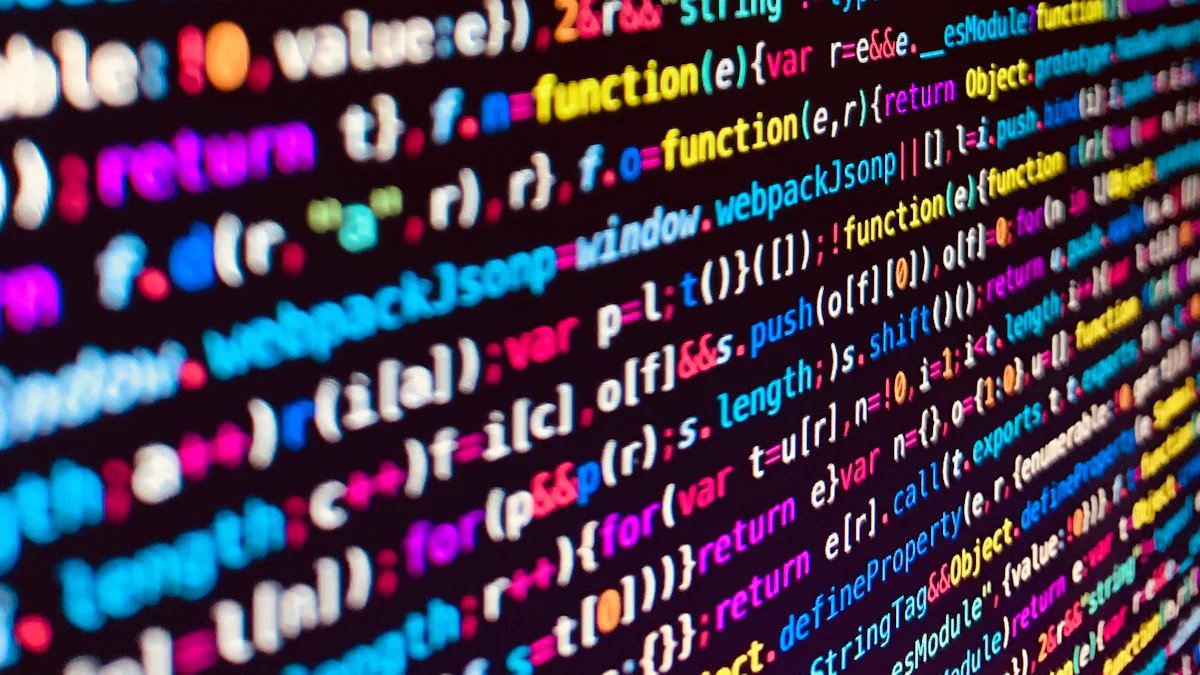
Diffusion models and transformers have revolutionized the field of image and video synthesis (opens new window), showcasing remarkable advancements (opens new window) in quality and efficiency. The blog aims to delve into the significance of these models, particularly in enhancing generative capabilities. By exploring their impact on various applications, readers will gain insights into the evolving landscape of computer vision and multimodal tasks.
# Understanding Diffusion Models
# Introduction to Diffusion Models
Diffusion models, unlike traditional generative models, focus on transforming noise into desired data through an iterative diffusion process (opens new window). This unique approach sets them apart from other methods by gradually converting noise into meaningful information. The core principle of diffusion involves a step-by-step transformation that refines the initial noise input into coherent outputs. By iteratively diffusing the noise signal, these models can generate high-quality samples with remarkable precision.
# Basics of Diffusion
At the foundation of diffusion models lies their ability to generate high-quality images (opens new window) and their potential for various applications. These models have extended beyond image generation to encompass diverse modalities like audio synthesis and video production. Their versatility in handling different data types showcases the adaptability and robustness of diffusion-based approaches in multimodal tasks.
# Diffusion in Generative Modeling
Central to the operation of diffusion models are several key mechanisms such as score-based generative modeling (opens new window), denoising diffusion probabilistic models, and stochastic differential equations. These components collectively drive the performance of diffusion models by enabling them to transform noise into structured data effectively.
# Denoising Diffusion
Denoising diffusion is a critical aspect of diffusion models that ensures stable and accurate sample generation (opens new window). By employing denoising steps, these models gradually refine noisy inputs to produce clear and coherent outputs. The integration of stable diffusion (opens new window) techniques enhances the overall quality and stability of generated samples.
# Stable Diffusion
Stable diffusion techniques play a vital role in ensuring consistent output quality across different iterations. By maintaining stability throughout the diffusion process, these models can generate reliable results with minimal fluctuations or distortions.
# Latent Diffusion Models
Latent diffusion models represent an advanced form of diffusion that focuses on leveraging latent spaces for enhanced generative capabilities. By exploring latent dimensions, these models can capture intricate patterns within data distributions, leading to more nuanced and diverse sample generation.
# Applications of Diffusion Transformer
The fusion of diffusion principles with transformer architectures has opened up new possibilities in various domains, particularly in image generation tasks. By integrating diffusion transformers, researchers have achieved significant advancements in scaling image generation processes while maintaining high output quality.
# Image Generation
One of the primary applications of diffusion transformers is in image generation tasks where they excel at producing high-resolution images with exceptional detail and realism. The combination of diffusion principles with transformer architectures has revolutionized image synthesis by enhancing both scalability and quality simultaneously.
# Scaling and Quality
The integration of diffusion transformers has not only improved the scalability of generative tasks but has also elevated the overall quality standards for generated content. Through efficient utilization of computational resources, these models can handle large-scale image generation processes without compromising on output fidelity.
# Transformers in Detail
# Vision Transformers (opens new window)
Vision Transformers, commonly referred to as ViT (opens new window), have significantly impacted the field of computer vision by introducing a novel perspective on image processing. The integration of Vision Transformers has revolutionized traditional convolutional approaches by emphasizing self-attention mechanisms. Through self-attention, ViT models can efficiently capture global dependencies within images, enabling them to recognize complex patterns with remarkable accuracy.
# ViT and its Impact
The introduction of ViT has reshaped the landscape of image classification tasks, showcasing superior performance compared to conventional CNN architectures. By leveraging self-attention mechanisms, Vision Transformers excel at capturing long-range dependencies in images, enhancing their ability to understand intricate visual features. This transformative impact has propelled ViT models to the forefront of various computer vision applications.
# Learning and Data Handling
Incorporating Vision Transformers into machine learning pipelines requires a comprehensive understanding of their learning dynamics and data processing capabilities. These models rely on extensive training datasets to learn diverse visual concepts effectively. Moreover, efficient data handling techniques play a crucial role in optimizing the performance of Vision Transformers across different tasks.
# Transformer Decoder
The Transformer Decoder module serves as a fundamental component in sequence-to-sequence modeling tasks, facilitating the generation of output sequences based on learned representations. By decoding encoded information into meaningful outputs, this module plays a pivotal role in various natural language processing and generative modeling applications.
# Architecture and Function
The architecture of the Transformer Decoder is designed to decode encoded inputs through multi-head self-attention mechanisms and feed-forward neural networks. This structured approach enables the decoder to generate coherent outputs by attending to relevant parts of the input sequence iteratively. Through its functional design, the Transformer Decoder enhances the overall efficiency and accuracy of sequence generation processes.
# Model Size and Efficiency
Balancing model size with computational efficiency is a critical consideration when implementing Transformer Decoders in practical applications. Optimizing model size ensures that decoding processes remain computationally feasible while maintaining high levels of performance. By fine-tuning parameters related to model size and efficiency, practitioners can tailor Transformer Decoders to suit specific task requirements effectively.
# DiT (Diffusion Transformer)
The DiT (Diffusion Transformer) represents an innovative fusion between diffusion principles and transformer architectures, offering enhanced capabilities for generative modeling tasks. By combining diffusion-based noise transformation with transformer mechanisms, DiT models can generate diverse samples with improved quality and fidelity.
# Generalized Architecture
The generalized architecture of DiT encompasses intricate layers that integrate diffusion steps with transformer blocks seamlessly. This unified structure enables DiT models to leverage both diffusion principles for noise refinement and transformer components for feature extraction effectively. Through its versatile architecture, DiT demonstrates exceptional flexibility in handling various generative tasks.
# Gflops and Performance
Analyzing the computational efficiency of DiT models involves assessing their performance metrics in terms of operations per second (Gflops) relative to sample quality. By measuring Gflops against sample generation outcomes, researchers can evaluate the cost-effectiveness and computational efficacy of DiT architectures accurately. This analysis provides valuable insights into optimizing model performance while balancing computational resources efficiently.
# Integrating Diffusion Models and Transformers
# Diffusion Models with Transformers
Scalable Diffusion Models (opens new window) have witnessed significant advancements through the integration of transformer architectures, leading to enhanced generative capabilities. The fusion of diffusion models with transformers has paved the way for more efficient and high-quality sample generation processes. By leveraging the strengths of both approaches, researchers have achieved remarkable results in various applications, particularly in image synthesis tasks.
# Scalable Diffusion Models
The collaboration between diffusion models and transformers has resulted in scalable diffusion models that can handle large-scale data processing with improved efficiency. These models demonstrate a notable reduction in FID scores while optimizing computational Gflops, showcasing their ability to achieve superior performance metrics. Through innovative techniques and advanced architectures, scalable diffusion models with transformers set new standards for generative modeling tasks.
# Understanding Latent Space
Exploring the latent space within diffusion models integrated with transformers offers a deeper understanding of complex data distributions. By delving into latent dimensions, researchers can uncover intricate patterns and relationships within datasets, enabling more nuanced sample generation processes. Understanding the latent space dynamics enhances the interpretability and flexibility of diffusion models with transformers, empowering them to produce diverse and high-quality outputs.
# Diffusion Transformers Generalized Architecture (opens new window)
The generalized architecture of diffusion transformers combines the principles of noise transformation from diffusion models with the robust features of transformer structures. This unified approach enables Diffusion Transformers to excel in capturing fine details while maintaining overall image resolution and quality standards. By incorporating network optimizations and token-based strategies, these architectures enhance both computational efficiency and output fidelity.
# Network and Tokens
The integration of optimized networks and token-based mechanisms within Diffusion Transformers streamlines information flow and processing during sample generation. These components work synergistically to improve model convergence rates while preserving essential details in generated samples. By strategically managing network connections and token interactions, Diffusion Transformers achieve a balance between computational complexity and output quality.
# Image Resolution and Quality
Enhancing image resolution without compromising quality is a core focus of Diffusion Transformer Architectures. Through meticulous design choices and algorithmic refinements, these architectures ensure that generated images exhibit high levels of detail and realism. By optimizing resolution parameters alongside quality metrics, Diffusion Transformers deliver exceptional visual outputs that rival traditional generative methods.
Summary of Key Points:
Diffusion models and transformers have redefined generative modeling, showcasing exceptional capabilities in image and video synthesis.
The fusion of diffusion principles with transformer architectures has led to significant advancements in sample generation quality and scalability.
Vision Transformers (ViT) have revolutionized image classification tasks by emphasizing self-attention mechanisms for capturing complex visual dependencies effectively.
Future Developments and Recommendations:
Future research should focus on bridging the gap between transformers and diffusion models to explore broader applications across various domains.
Advancements in large-scale pre-trained text-to-image diffusion models offer promising avenues for generating high-fidelity images (opens new window) with intricate details.
Final Thoughts on Impact:
The emergence of diffusion transformers, such as SORA from OpenAI (opens new window), highlights the transformative potential of integrating transformers into diffusion models.
Each model, whether diffusion-based or transformer-driven, brings unique strengths to different domains, showcasing their diverse generative capabilities (opens new window).



